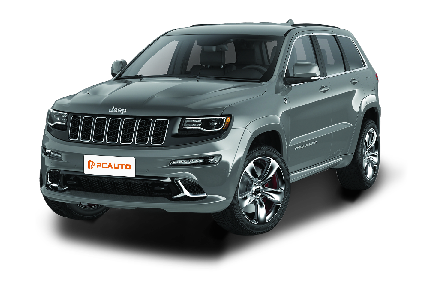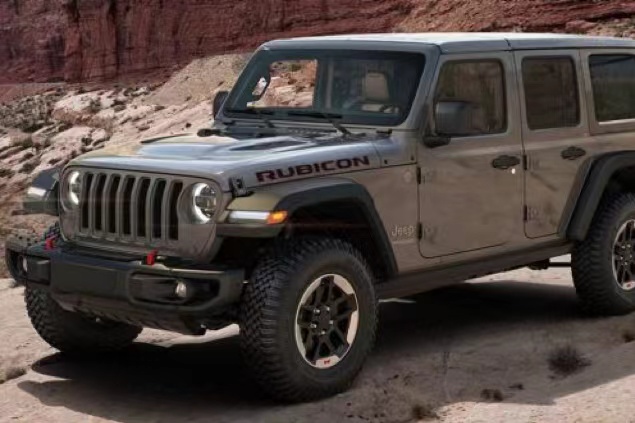Q
Are the Jeep SRT supercharged?
The Jeep Grand Cherokee SRT 6.4 V8 is not supercharged; it features a naturally aspirated (NA) engine. The "NA" in the specifications denotes that it relies on normal atmospheric pressure to intake air, without utilizing a supercharger or turbocharger to force additional air into the engine. This 6417cc (6.4L) V8 engine delivers 461 horsepower at 6250 rpm and 624 Nm of torque at 4100 rpm. Naturally aspirated engines typically provide more linear power delivery, resulting in a smoother and more consistent driving experience. Their design can also be simpler and potentially more reliable. However, compared to supercharged or turbocharged engines, they may not generate as much power from the same displacement. Some automotive enthusiasts prefer the sound and feel of naturally aspirated engines, appreciating the raw and unassisted power they offer.
Special Disclaimer: This content is published by users and does not represent the views or position of PCauto.
Related Q&A
Q
What is the most common problem with the Jeep Grand Cherokee?
In Malaysia, one of the more common issues reported with the Jeep Grand Cherokee involves electronic system malfunctions—particularly instrument cluster display errors, central touchscreen freezes, or malfunctioning reverse cameras. These problems are often related to software compatibility or sensor sensitivity and can usually be resolved through system updates at authorized service centers.
In addition, some owners have reported that the air suspension system may develop air leaks or experience slow height adjustments after prolonged use. This is often linked to accelerated aging of rubber components in the tropical climate. Regular inspection of the suspension lines and seals can help prevent such issues. From a powertrain perspective, the 3.6L Pentastar engine is prone to carbon buildup in hot and humid conditions if not properly maintained. For Malaysian owners, it is advisable to shorten the service interval to every 8,000 km and use fully synthetic engine oil.
Notably, the Grand Cherokee’s four-wheel-drive system performs exceptionally well during Malaysia’s rainy season. However, transfer case fluid should be replaced strictly according to the maintenance schedule to prevent moisture-related damage. Owners should also ensure that sunroof drainage channels are kept clean to avoid water leaks into the cabin during heavy rains. Overall, with a maintenance strategy tailored to tropical conditions, this American SUV can deliver reliable performance to meet daily driving needs.
Q
Is the Jeep Grand Cherokee SRT AWD?
Yes, the Jeep Grand Cherokee SRT is equipped with All Wheel Drive (AWD). This AWD system enhances traction and stability, proving particularly advantageous across various driving conditions. Whether navigating wet or slippery roads during Malaysia's rainy seasons or seeking improved control when cornering on regular roads, the AWD system dynamically distributes power to all four wheels as needed. This optimizes vehicle handling while minimizing wheel spin risk. Furthermore, it enhances acceleration performance, enabling the 461-horsepower engine to efficiently transfer power to the road surface for a smooth and confident driving experience.
Q
Does the Jeep Grand Cherokee SRT have a Hellcat engine?
The Jeep Grand Cherokee SRT does not have a Hellcat engine. The Hellcat engine is typically associated with certain models of Dodge, such as the Dodge Challenger SRT Hellcat and Dodge Charger SRT Hellcat. These Dodge models are known for their high-performance capabilities, with the Hellcat engine delivering substantial horsepower and torque.
The Jeep Grand Cherokee SRT is equipped with a 6.4-liter V8 engine. It can generate 461 horsepower and 624 Nm of torque. This engine provides the Grand Cherokee SRT with strong acceleration and performance suitable for an executive-class vehicle. While both the Hellcat-powered Dodges and the Jeep Grand Cherokee SRT offer high performance, they have different powertrain configurations and characteristics to suit various driving preferences and needs.
Q
How much is the Jeep Grand Cherokee SRT worth?
The Jeep Grand Cherokee SRT is priced at RM 698,889. This vehicle delivers powerful performance with its 6.4-liter V8 engine that generates 461 horsepower and 624 Nm of torque. It can accelerate from 0 to 100 km/h in just 5 seconds. Equipped with an 8-speed automatic transmission and all-wheel drive, it offers excellent handling and traction. The interior is well-appointed, featuring a Harman Kardon sound system with 19 speakers, a power panoramic sunroof, dual-zone automatic climate control, and various safety features including 7 airbags. It also has a sizable 93-liter fuel tank and a spacious 990-liter trunk, making it suitable for both daily commutes and long journeys.
Q
What is the difference between the Grand Cherokee SRT and Limited?
The Grand Cherokee SRT and Limited have several differences. The SRT is a high-performance model, powered by a 6.4L V8 engine that delivers 461 horsepower and 624 N·m of torque, enabling it to accelerate from 0 to 100 km/h in just 5 seconds. It's priced at RM 698,889. It features sporty elements like a lowered body with aerodynamic kits and Brembo brakes for enhanced handling. The interior incorporates sporty materials.
On the other hand, the Limited prioritizes comfort and luxury. It comes with premium interior materials such as genuine leather seats and wood trim. Standard features include a panoramic sunroof, a BOSE sound system, and intelligent driving assistance systems. It offers a more refined and comfortable driving experience rather than extreme performance. So, if you desire speed and a sporty drive, the SRT is ideal; but if luxury and comfort are your priorities, the Limited would be a better fit.
Q
How many Jeep Grand Cherokee SRT were made?
Sorry, no information about the specific production volume of the Jeep Grand Cherokee SRT was found. The Jeep Grand Cherokee SRT is a high-performance luxury SUV, renowned for its powerful engine and excellent off-road capabilities. Take the 2015 Jeep Grand Cherokee SRT 6.4 V8 as an example: it is equipped with a 6.4L V8 naturally aspirated engine delivering a maximum power output of 339 kilowatts (461 PS), achieving the 0-100 km/h sprint in just 5 seconds officially. The vehicle features a range of advanced technologies and comfort amenities, including an 8.4-inch central touchscreen and Harman Kardon audio system, along with comprehensive safety provisions such as seven airbags and electronic stability control. While its exact production figures remain undisclosed, this model has garnered significant attention in the automotive market due to its distinctive appeal.
Q
What was the last year of the Grand Cherokee SRT?
2021 was the last recorded model year of the Grand Cherokee SRT available in the local market. It is powered by a 6.4L HEMI V8 engine delivering 461 horsepower (461PS) and 339 kilowatts of maximum power. With robust performance capabilities, it achieves 0-100km/h acceleration in under 5 seconds. Featuring an All-Wheel Drive system paired with independent front/rear suspensions and ventilated disc brakes, the vehicle demonstrates exceptional handling and braking performance. The well-appointed interior includes seven airbags for safety protection, a 19-speaker Harman Kardon premium audio system, along with comfort features such as a panoramic sunroof and heated seats. While this represents the final model year available, actual market availability may vary across different used vehicle sources. Prospective buyers should verify specific vehicle details through multiple channels when purchasing pre-owned units.
Q
How much HP does a Grand Cherokee SRT have?
The Jeep Grand Cherokee SRT 6.4 V8 delivers 461 horsepower (PS). This potent engine provides the vehicle with robust acceleration and road performance. Its 6.4-liter V8 engine generates a maximum torque of 624 N·m at 4100 rpm, reaching peak power output of 339 kW at 6250 rpm. This power enables the Grand Cherokee SRT to accelerate from 0 to 100 km/h in merely 5 seconds. It delivers an exhilarating driving experience whether overtaking on highways or enjoying spirited driving. Additionally, its performance is enhanced by features such as an 8-speed automatic transmission and All-Wheel Drive system, improving both handling and traction for comprehensive driving dynamics.
Q
Can you turbo a Jeep SRT?
Technically, it is possible to turbocharge a Jeep SRT. However, it's a complex modification. The Jeep Grand Cherokee SRT comes with a 6.4L naturally aspirated V8 engine that already delivers substantial power at 461 horsepower. Turbocharging involves adding a turbocharger to the engine to force more air into the combustion chambers, thereby increasing power output. However, such modifications require careful consideration as they impact multiple components including the engine internals, fuel system, and cooling system. For example, the stock fuel injectors may not supply sufficient fuel for the increased air intake, and the cooling system might struggle to manage the additional heat generated. Additionally, turbocharging could void the vehicle's warranty. Proper tuning is also critical to ensure smooth and efficient engine operation. Incorrect tuning may lead to performance issues or even engine damage. Therefore, while feasible, this modification should only be performed by experienced mechanics with expertise in the Jeep SRT's engine dynamics.
Q
Is a SRT Jeep a V6?
An SRT Jeep is not equipped with a V6 engine. Take the 2015 Jeep Grand Cherokee SRT as an example—it is powered by a 6.4L V8 engine with a displacement of 6417mL, delivering 461 horsepower and 624 N·m of torque. This V8 engine provides the vehicle with robust power output, enabling it to accelerate from 0 to 100 km/h in just 5 seconds. The V8 configuration also contributes to a smooth and powerful driving experience, whether for daily commuting or more demanding driving scenarios. In contrast, a V6 engine typically has fewer cylinders and generally offers less power and torque compared to a V8 engine of the same displacement.
Latest Q&A
Q
What is the warranty on Swift 2024 engine?
The 2024 Swift's engine warranty is typically 5 years or 150,000 kilometers, whichever comes first. This is Suzuki Malaysia's official standard warranty policy, though specific terms might vary slightly with dealer promotions, so it's best to check with authorized dealers for the latest details before buying. It's important to note that the warranty usually covers manufacturing defects in the engine, but damage caused by improper maintenance as per the manual, use of non-genuine parts, or human error isn't included. Malaysia has a tropical climate, with high temperatures and humidity placing higher demands on engine durability. Owners are advised to strictly follow the maintenance schedule for oil and coolant changes, and regularly inspect the condition of belts and hoses. Additionally, Suzuki's warranty policy generally includes 24-hour roadside assistance, which is especially useful for long-distance drivers in Peninsular Malaysia and East Malaysia. While understanding the warranty details, owners should also keep complete maintenance records, as this can effectively boost the vehicle's residual value during future used car transactions.
Q
Is Swift 2024 worth buying?
The 2024 Suzuki Swift is a compact hatchback worth considering in the Malaysian market, especially for city commuters and budget-conscious buyers. It carries forward the Swift lineup's reputation for affordability and practicality, powered by a 1.2L naturally aspirated engine that delivers impressive fuel efficiency – official figures peg the combined consumption at around 4.5L/100km, which is pretty wallet-friendly given Malaysia's fuel prices. The interior is straightforward but well-equipped, with a standard 7-inch touchscreen supporting Apple CarPlay and Android Auto, hitting the mark for younger users. On the safety front, it comes with 6 airbags, ESP, and hill-start assist as standard, keeping pace with mainstream offerings in its class. That said, rear legroom is a bit tight, making it better suited for small families or singles. Compared to the Perodua Myvi, the Swift edges ahead in handling agility and brand reputation, though the Myvi might be the go-to for those on an extremely tight budget thanks to its easier maintenance and cheaper parts. If you're after driving fun and fuel economy, the 2024 Swift is a solid pick – but do yourself a favor: head to a dealership for a test drive to check if the space works for you, and shop around different dealers too. The Malaysian market often has promotions like free servicing or low-interest loans up for grabs.
Q
What is the maintenance cost of Swift 2024?
The 2024 Suzuki Swift has relatively affordable maintenance costs in Malaysia. A regular service (like oil and filter changes) runs around RM200 to RM300 per visit, depending on the oil type used (mineral, semi-synthetic, or fully synthetic) and the authorized service center's pricing. Servicing is required every 10,000 km or 6 months, whichever comes first. For major services (involving brake fluid, transmission oil replacement, etc.), costs can go up to RM500 to RM800. As an economical hatchback, the Swift benefits from ample parts supply and reasonable pricing, making long-term ownership costs low—ideal for budget-conscious buyers. Additionally, it's advisable for owners to stick to the factory maintenance schedule; not only does this extend the vehicle's lifespan, but it also preserves warranty coverage. Malaysia's hot and rainy climate means regular checks on the air-conditioning system and undercarriage rust protection are important too. These extra items might incur small additional costs, but they effectively prevent expensive repair bills down the line. Overall, the 2024 Swift is easy on the maintenance side, making it a great value-for-money choice for city commuting.
Q
Does the Swift 2024 have good resale value?
Based on the general performance of Malaysia's auto market, the 2024 Suzuki Swift is expected to hold its resale value well. This largely comes down to Suzuki's solid reputation locally, the Swift lineup's long-standing reliability, and strong market demand. The car is known for being fuel-efficient, nimble to drive, and having relatively affordable maintenance costs—all factors that positively impact its second-hand value. In Malaysia, small cars like the Swift are usually popular with urban commuters, so they tend to move quickly in the used car market, which helps keep prices stable. What's more, if the 2024 Swift maintains the durability and low fault rate of previous models, its resale value could outperform some rivals in the same class. To further boost its second-hand worth, it's a good idea to stick to regular servicing at authorized centers, keep complete records, and avoid heavy modifications—all of which directly affect the price assessment when it comes time to sell. When shopping for such high-resale-value models, Malaysian consumers can also check out annual residual value reports from local used car platforms or industry associations for more specific market data.
Q
What is the fuel consumption of Swift 2024?
The 2024 Suzuki Swift delivers impressive fuel economy in Malaysia. Powered by a 1.2-liter naturally aspirated engine paired with a lightweight body design, official figures put its combined fuel consumption at around 4.5 liters per 100 kilometers (actual numbers may vary slightly depending on driving habits and road conditions). It's perfect for city commutes or long drives, helping you keep fuel costs in check. The Swift has always been known for being economical and practical, and the 2024 model takes it up a notch with optimized engine combustion efficiency. There might even be a hybrid version available depending on market specifications, boosting its eco-friendly credentials further. When picking a car in Malaysia, besides fuel consumption, factors like regular maintenance costs and insurance premiums matter too. The Swift scores here with readily available parts and easy servicing, making it a great long-term value proposition. If you're after even better mileage, stick to smooth driving habits and keep up with regular maintenance—like changing the air filter and engine oil on time. Those little things can really help improve fuel efficiency.
View More



















Pros
Cons